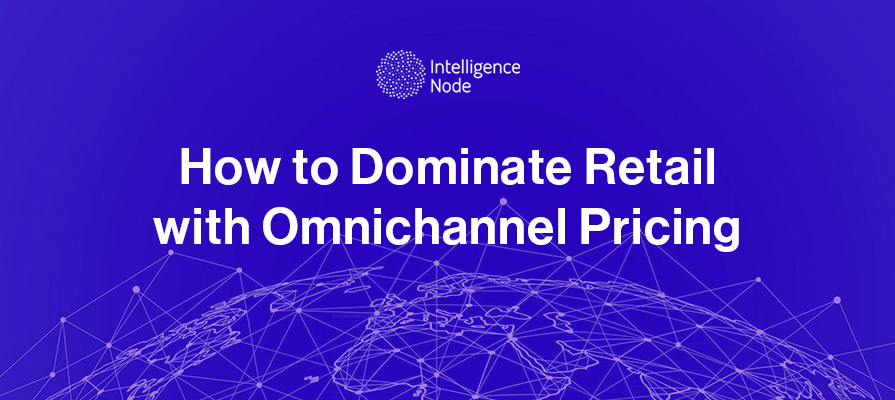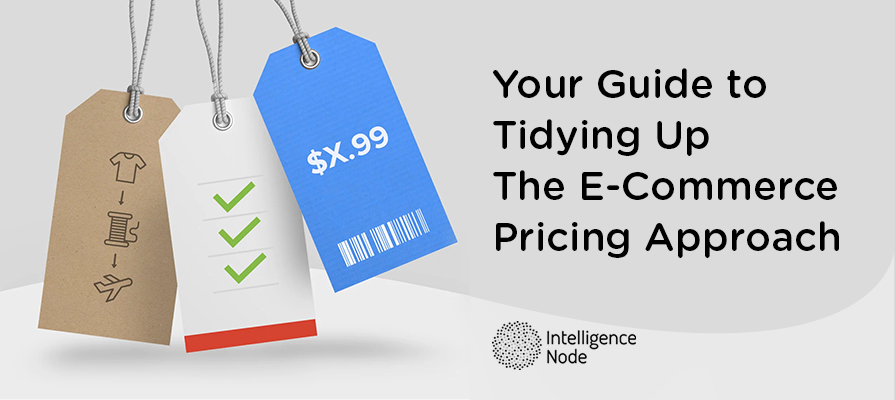Despite rapid technological progress, most businesses miss out on lucrative sales. They struggle to decode what’s working and what isn’t and find it hard to deploy all of the contextual information around which prices and promotions are working best to their advantage. What adds to it is the uncertainty around how to deal with stores in a “price-transparent environment” and “when to match Amazon and other online competitors.”
The retail industry is in massive flux, with many changes in the offing. But one thing is certain: businesses that don’t optimize their pricing risk becoming outdated and losing sales to competitors. In this post, you will learn why omnichannel pricing is key to winning commerce and how you can implement it to drive sales. But first, let’s compare Omnichannel pricing against channel-specific pricing and combination pricing.
Comparison of Three Pricing Strategies
Pricing today is multifaceted. Modern technology empowers shoppers with full transparency across businesses globally. They can access any store anytime and track dynamic pricing movements to get real-time updates on price changes. Likewise, companies have powerful retail tools to get customer data and run targeted discounts and promotions to engage consumers in exciting ways.
Unless you are competitive and use customer data to devise your pricing strategy, maximizing revenue while protecting margins will be difficult. But before you pick one, ensure you know about these three pricing strategies:
- Omnichannel pricing
It refers to the strategy where pricing stays the same across all platforms. The uniform pricing helps instill trust and enhance the consumer experience as shoppers explore options like BOPIS and find the best fit for their needs. Omnichannel retail pricing works best for businesses that aim to build loyalty and improve customer retention.
- Channel-specific pricing
Channel-specific or multi channelmultichannel pricing strategy involves setting different pricing across platforms. It works for brands whose consumers have (relatively) linear shopping journeys and don’t spend much time researching. This strategy ensures brands can increase profit margins on certain channels as they can sell a product at full price in-store but offer a 20% discount online.
- Combination pricing
A combination or hybrid pricing strategy is when you set the same prices across different channels, with a few exceptions. This is common with eCommerce merchants who offer a single price but tempt shoppers with attractive discounts and specific promotions to prompt them to revisit abandoned carts.
How to Pick the Right Pricing Strategy
A well-defined pricing strategy considers the business model, competitive advantage, consumer needs, and channel economics. It prioritizes revenue goals and is not solely driven by competitor movements. Besides, seasoned players understand the value of customer data as a pricing asset and use powerful retail analytics tools to stay abreast of market trends while devising their pricing.
To get your strategy right, ensure you keep the above in mind and:
- Define your objectives: Pricing strategies can vary widely depending on business goals. The objective to increase profit margins differs from retaining customers or attracting new buyers. Similarly, if you want to offload excess warehouse stock or go international, you must consider factors like geography.
- Perform consumer research: Competitive difference and perceived product value also significantly impact buying decisions of different demographic groups. Track buyer reviews and ratings on the digital shelf to understand what your target audience values and why, while deciding your omnichannel pricing.
- Track competitors: Best deals are a major priority for comparison shoppers. To cater to this group, you must follow dynamic pricing and promotions movements of competitors to determine your strategy. Intelligence Node helps you monitor competitor pricing across the entire online landscape and optimize your campaigns accordingly.
- Consult pricing analysts: Expert opinion will help validate your production cost analysis, competitive research, and consumer and market behavior. This will ensure you are on the right track and not losing out on margins and driving sustainable growth.
Next, let’s discuss why omnichannel pricing is vital for profitable growth.
Importance of Omnichannel Pricing
Digital-savvy and comparison shoppers want the best deals and value for money. They expect personalized interactions based on past purchases and choose brands that provide relevant offers and recommendations. They begin their product searches online, and 75% of them expect a consistent experience across every channel.
Shoppers don’t have a linear buying journey and undergo multiple touchpoints.
To offer a cohesive shopping experience, omnichannel pricing becomes imperative. It boosts engagement rate, purchase frequency, average order value, and customer retention rates and drives the bottom line. Leading names across categories follow these best practices to offer shoppers a wholesome consumer experience and drive revenue:
- Understand the buying journey inside out
- Create channel-specific content and options
- Offer seamless customer support
- Ensure consistent branding and messaging
- Deploy resilient omnichannel inventory management
Let’s take an example to understand how these fit into an omnichannel strategy.
Image Source: BonLook
BonLook sells prescription eyeglasses in stores across the US and Canada. Buying glasses is a high-touch buying process and lends itself to brick-and-mortar shopping. To engage shoppers digitally and replicate the in-store experience, BonLook launched shopping guides and virtual try-on features, which give them a 180-degree view of how glasses will look on them.
BonLook also has a custom iOS app that allows its executives to help buyers pick frames and make their purchases later. With both channels connected, buyers can shop however they like, and the associates can check inventory and orders in real time. BonLook runs this omnichannel strategy on Shopify Plus and has been able to increase its average order value by 18%.
Objectives of an Omnichannel Strategy
An omnichannel strategy aims to remove suboptimal processes and functional barriers by embedding consumer-focused behaviors and technologies across the organization. To achieve that, it focuses on:
- Aligning stakeholders with a common process: It brings structure to strategy and establishes its credibility, making it easier to get buy-in from business leaders, technology vendors, and implementation partners. It also clearly defines the rules around ownership of technologies and policies.
- Recognizing operational capability and technology gaps: A roadmap targets identifying and addressing limitations to reach the projected growth outlined in the strategic plan. It makes it easier for you to align the entire organization on the who, what, and when for delivering omnichannel capabilities during the whole duration of the project.
- Plotting deliverables and responsibilities on a timeline: A roadmap brings different omnichannel stakeholders together to jointly address questions on how to get, develop, execute, and integrate staff, technology, and processes to hit milestones within the assigned time.
How to Implement the Right Omnichannel Platform Strategy
Business leaders must anticipate and address the changing consumer preferences quickly. During the pandemic, retailers responded to buyers’ needs for a contactless shopping experience by offering digital payment options and curbside pickup. They also introduced and experimented with techniques like:
- Buy in-store, ship to customer
- Reserve online, pickup in-store
- Buy online, return in-store
- Online exchanges and returns
But winning and retaining shoppers requires you to be consumer-centric and nimble at all times. To offer a successful omnichannel experience, you must continually optimize your programs with added value and services to deliver a frictionless customer experience for cross-channel ordering and fulfillment.
Further, you need to understand the role of various categories in online and physical stores. While fashion and consumer electronics categories dominate online, buyers prefer in-store shopping for categories like celebrations, stationery, home essentials, and car care. Others, like kitchenware and garden supplies, have mixed preferences. Ensure you keep that in mind to optimize inventory and dominate online pure-plays like Amazon.
Finally, deploy scalable retail technology like Intelligence Node to automate data collection and analysis. It will save staff time on improving current strategies and creating new ones. Leveraging smart insights, you can decode historical trends and prepare ahead by launching, measuring, and ramping up new plans.
Final Thoughts
Omnichannel strategies would have seemed outlandish pre-2020. But the pandemic has transformed the shopping experience entirely. Go omnichannel to integrate your channels and offer a consistent user experience to drive long-term growth. In collaboration with BARE International, Intelligence Node gives you a 360-view into buying journeys to help you offer shoppers the right prices. Book a demo today.




